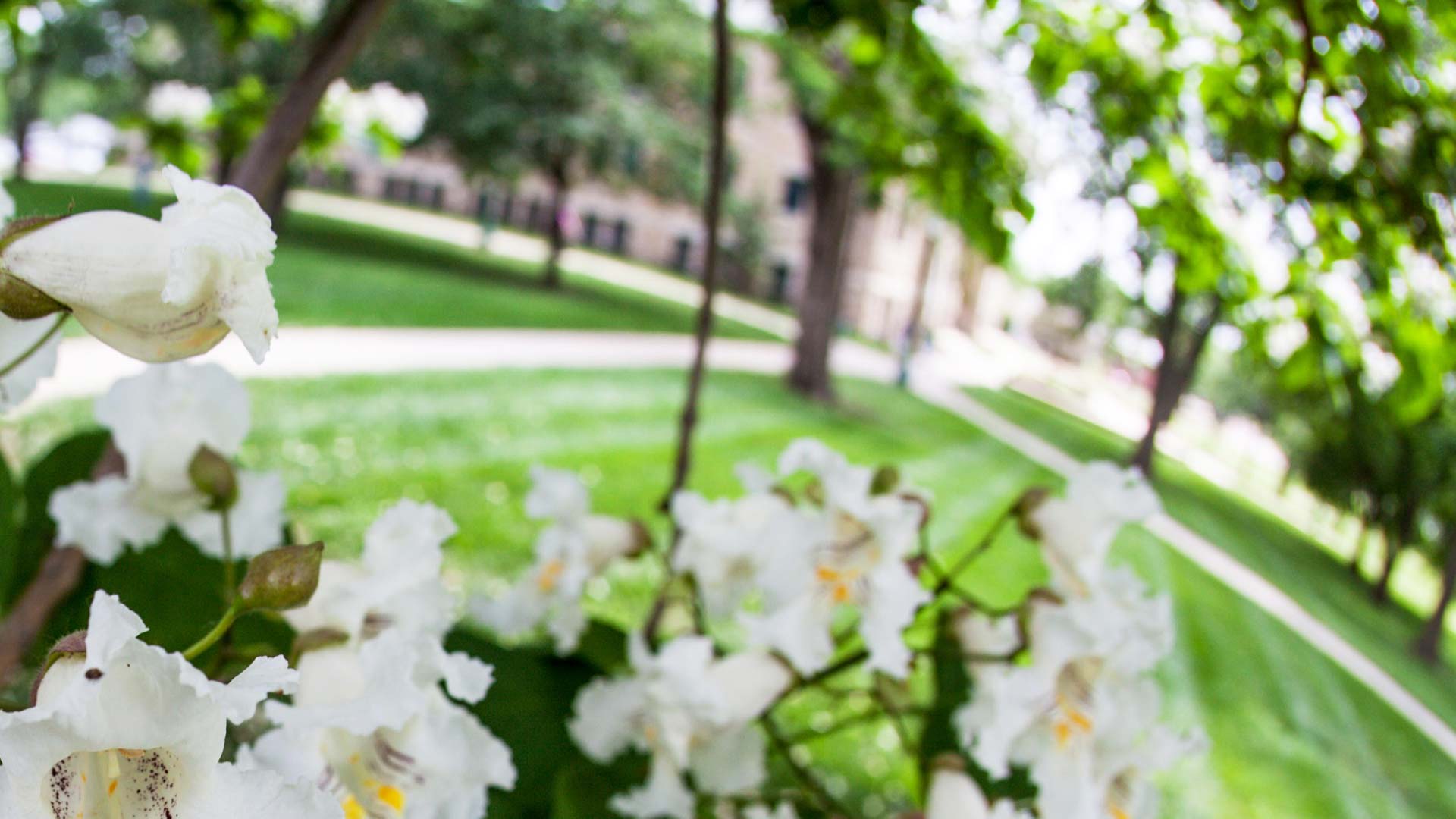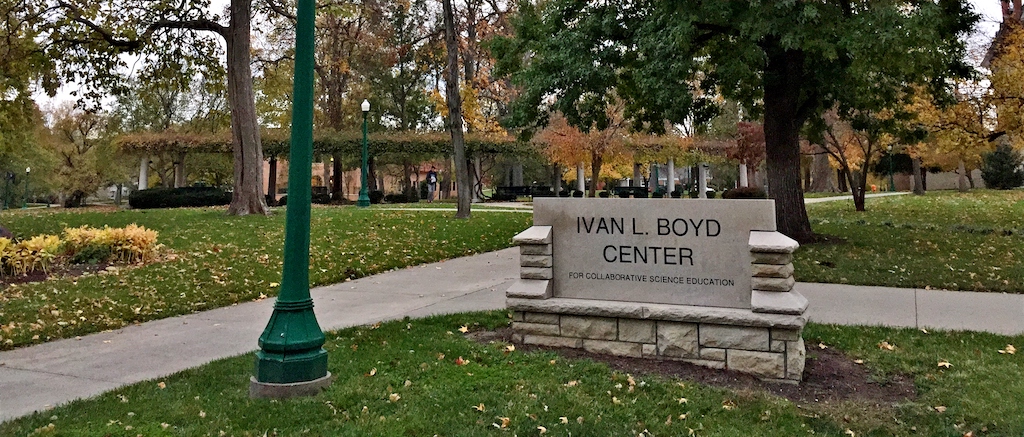Believe it or not, back in 1858, when Baker University was founded, this entire area was prairie.
While the native vegetation on the site of the university was historically grassland, the founding of the university and the surrounding community in 1858 brought with it the establishment of planted trees and shrubs. The few existing trees in the area were along the several branches of Tauy Creek that snake through Baldwin City; whereas, there were no trees on the site that would become the Baker campus.
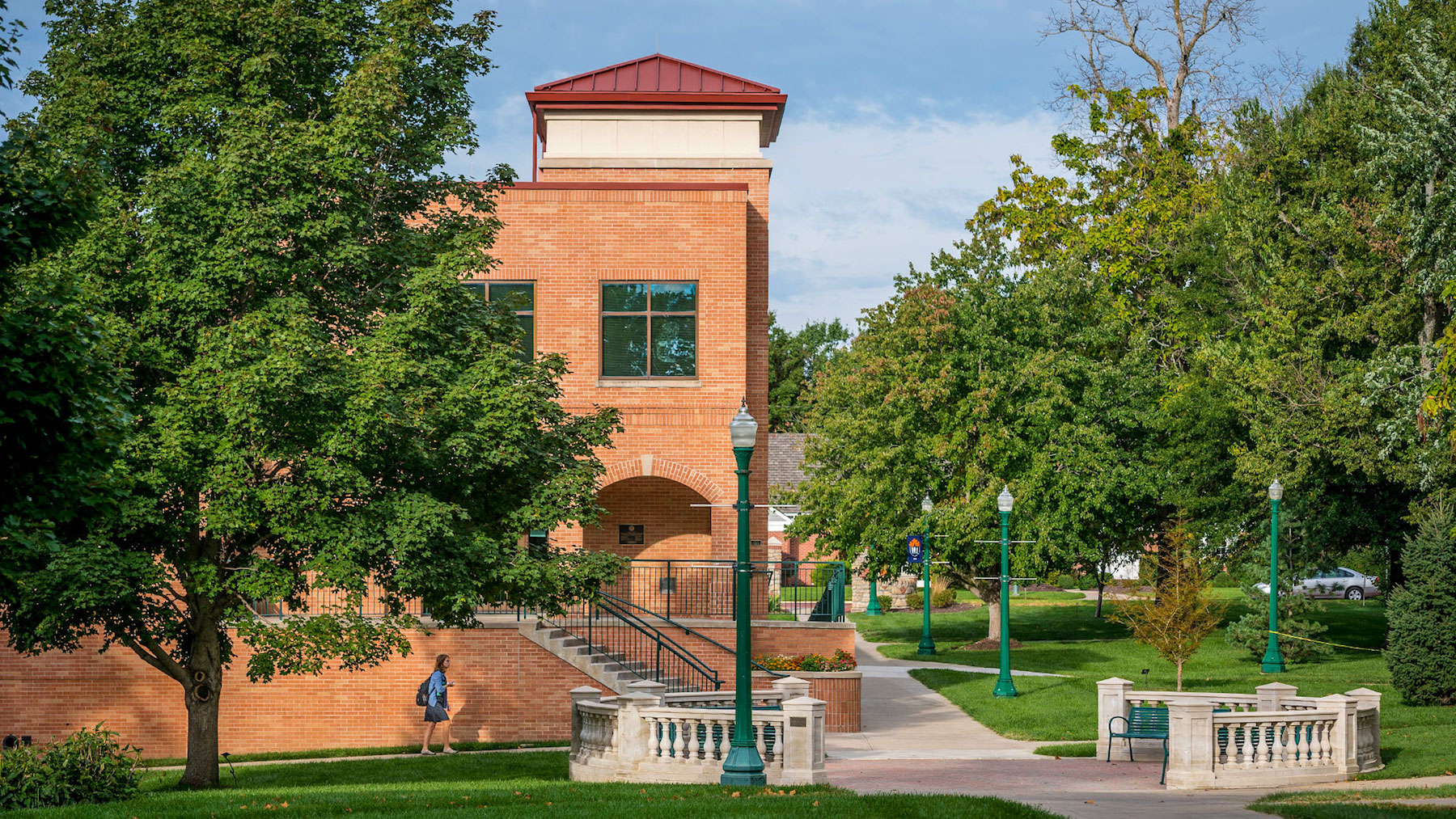
The conversion of the campus from a predominantly grassland community to a woody landscape began in 1874 with the planting of large numbers of catalpas and maples on the north half of campus. These trees and others planted in the following years established the history of a treed campus.
Many of these early specimens still exist in the arboretum and provide examples of tree species preferred in the late 19th and early 20th centuries. The campus’s tree collection grew through the years, largely with the goal of adding to the aesthetic of the campus.

Ivan L. Boyd
The Ivan L. Boyd Arboretum was formally dedicated October 15, 1978, on the campus of the College of Arts and Sciences of Baker University in Baldwin City, Kansas, in honor of the efforts of professor of biology Dr. Ivan L. Boyd. Dr. Boyd came to Baker University in the fall of 1941. He was a professor and the chair of the Department of Biology until 1972 and continued to teach as an emeritus faculty member until his death in March 1982. Although many of the trees in the arboretum predate Dr. Boyd’s tenure at Baker, the collection is now populated with many trees planted by him and his successors.
With the establishment of the arboretum, tree species and varieties have been added to not only improve the campus aesthetically but also to provide an educational opportunity to its students. Several generations of students have learned to identify tree species and studied plant biology through the use of arboretum specimens. Consequently, the arboretum has become a valuable teaching tool and an educational asset to the university on par with many of its other state-of-the-art facilities.
The arboretum is formally bound to the north by Dearborn Street, to the east by Sixth Street, to the west by Eighth Street, and on the south by Grove Street. It includes over 100 varieties of trees. Today the largest and probably oldest trees on campus are the northern catalpas. One of these grand old trees, which had to be removed recently, was more than 120 years old and was most likely planted sometime around 1882, the year Centenary Hall was built. Centenary Hall is no longer standing, but there are still 14 of these trees with diameters of more than 30 inches.

Tree Campus Higher Education
In 2011, Baker was the first university in Kansas to earn the Tree Campus Higher Education (formerly Tree Campus USA) distinction by the Arbor Day Foundation for its commitment to promoting healthy trees and engaging students and staff in the spirit of conservation. It continues to earn this designation annually through the commitment of the university to the perpetuation of the ideals and efforts of Dr. Ivan L. Boyd.
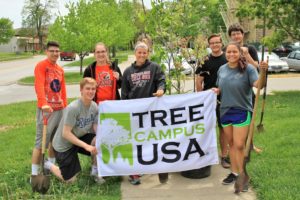
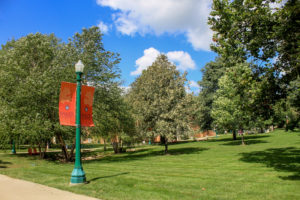
If you visit campus and want to view the arboretum, download the arboretum guide.
If you’d like a virtual view of the arboretum, please take a look at the Google Map. Arboretum specimens are marked as tree icons; clicking an icon will display information about that specimen and a link (in the Image URL field) to a Flickr set of specimen photos.
Nomination Process for Commemorative Trees
On occasion the Arboretum Committee will plant trees in the Ivan L. Boyd Arboretum to recognize individuals, organizations, or events that reflect the mission, character, values, or goals of Baker University. These trees may further be recognized as either honorary, in light of the honoree’s important contributions to the university, or as memorial to recognize a recently deceased member of the university community.
Annually during the fall academic semester, and not later than October 31, the Arboretum Committee may receive nominations for commemorative trees from department heads of all units of the university and members of the extended Baker University community. Nominations for commemorative tree recipients who meet the Arboretum Committee’s criteria (listed on the nomination form) can be made by submitting a formal request for nomination.
Arboretum Management Plan
The Ivan L. Boyd Arboretum Committee has developed a management plan to protect this important resource and ensure it remains an educational, safe, attractive, and sustainable campus urban forest on the Baldwin City campus of Baker University.
